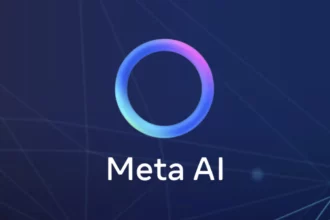Attention is a fickle thing – sometimes we have it, sometimes we don’t. But when it comes to Bahdanau Attention, you won’t be able to tear your eyes away. This revolutionary mechanism in the world of natural language processing is like a captivating magician, directing our focus to the most important parts of a text. In this blog post, we’ll unravel the secrets of Bahdanau Attention, explore its counterparts like Luong Attention, and even dive into the intriguing world of Triplet and Self-Attention Mechanisms. Get ready to be spellbound by the power of attention!
Table of Contents
ToggleUnderstanding Bahdanau Attention
The advent of attention mechanisms has been a game-changer in the domain of deep learning, particularly in the intricate world of Natural Language Processing (NLP). These mechanisms have revolutionized how neural networks perceive and process sequences of data, akin to how a discerning reader pores over a page, their focus intensifying on the most salient words that leap out with meaning.
In the bustling neural marketplace of ideas, the attention model serves as an astute selector, pinpointing the most relevant information amidst a sea of text. It meticulously adapts to the flow of input, whether it’s the raw intricacies of language or its more abstract representations. By doing so, the attention model ensures that the network’s predictions are not just accurate but contextually nuanced, resonating with the complexity of human language.
Imagine a spotlight that moves across a stage, its beam accentuating certain actors over others based on the unfolding narrative. Similarly, attention in neural networks dynamically illuminates the pivotal elements within a sequence that are crucial for the task at hand. Whether it’s translating sentences, summarizing paragraphs, or generating new text, attention mechanisms are the discerning eyes of neural architectures, always seeking out the narrative thread in the tapestry of data.
Let us delve into the specifics with a concise HTML table summarizing the key facts related to the main topic:
| Concept | Description |
|---|---|
| Attention Model in NLP | A part of neural architecture in NLP that dynamically highlights relevant features of input data, either in its raw form or higher-level representation. |
| Attention Mechanism in Deep Learning | A technique that selectively focuses on important input elements to improve prediction accuracy and computational efficiency in models. |
| Self-Attention Mechanism | A method used to capture dependencies within an input sequence, allowing a model to attend to different parts of the input in relation to itself. |
| Luong Attention Mechanism | An evolution of the Bahdanau model introducing global and local approaches for neural machine translation, focusing on all or selected subsets of source words. |
Within this context, the Bahdanau attention mechanism stands out as a pioneering innovation. It emerged as an intellectual beacon, lighting the way for subsequent models to handle the complexity of sequence-to-sequence tasks with unprecedented grace. As we journey further into the exploration of attention models, the Bahdanau variant will serve as our foundation, upon which we build a deeper understanding of how these mechanisms empower neural networks to mimic the intricate process of human attention.
With a firm grasp of the fundamentals laid out in this section, we are now poised to delve into the specifics of the Bahdanau model, which will be the focus of our next section.
Introducing the Bahdanau Model
Imagine the challenge of translating a novel into a different language. As a translator, you would carefully choose which sentences to focus on, and which words within those sentences hold the key to conveying the original meaning. This is precisely what the Bahdanau model, a breakthrough in neural machine translation, accomplishes within the realm of artificial intelligence.
Named after its creator, Dzmitry Bahdanau, this attention mechanism revolutionized the way machines understand and translate languages. The genius of the Bahdanau model lies in its intricate neural network that calculates attention weights. These weights act as a spotlight, illuminating the most relevant words in a source sentence to produce a coherent and accurate translation in the target language.
Unlike its predecessors, the Bahdanau model doesn’t rely on pre-determined alignments or fixed encoding patterns. Instead, it dynamically explores the entire sentence, aligning words in ways that reflect the nuanced relationships between different languages. This neural network-based approach allows for a level of flexibility and context-awareness that simple mathematical models, such as the Luong attention mechanism, do not inherently possess.
With Bahdanau attention, machine translation becomes less like a word-for-word substitution and more akin to an artful interpretation. It’s a dance of focus and context, with each step—the calculation of attention weights—guided by the rhythm of the input sequence. This results in translations that maintain the essence of the original text, capturing idioms, colloquialisms, and the subtlest linguistic cues.
The innovation of the Bahdanau model does not stop at machine translation. Its influence extends across various applications in natural language processing, from summarization to question answering. Its ability to parse and pay attention to different parts of a sentence as needed makes it a versatile tool in the ever-expanding toolbox of neural network architectures.
By integrating a learning-based approach to attention, the Bahdanau model takes a significant leap towards machines that not only process language but understand it in a way that feels almost human. As we delve further into the world of attention mechanisms, the ingenuity of the Bahdanau model sets a high bar for subsequent innovations, challenging us to think deeper about how machines can learn to discern what truly matters in a sea of data.
Luong Attention: A Comparative Perspective
In the ever-evolving landscape of neural machine translation, the emergence of the Luong attention mechanism has been a significant milestone, building upon the foundational work of the Bahdanau model. Much like an artist refining their brushstrokes to bring a scene to life, the Luong attention fine-tunes the process of selecting relevant information from a sea of words. Its creators introduced an innovative twist to attention mechanisms, with two distinct strategies: the global approach and the local approach.
The global approach is akin to a panoramic lens, capturing the entire vista of source words to calculate attention weights. This method ensures that no detail, no matter how minute, is overlooked in the translation process. In contrast, the local approach can be likened to a zoom lens, focusing on a specific segment of the source words. This targeted examination allows for a more concentrated and potentially more relevant selection, which can be pivotal in crafting a coherent translated sentence.
But what makes the Luong mechanism stand out against the Bahdanau backdrop? The key lies in its streamlined efficiency. While Bahdanau’s method employs a neural network to determine attention weights, Luong opts for a more direct mathematical formula. This not only simplifies the process but also offers potential speed advantages, a crucial factor when processing vast swathes of text.
Furthermore, the Luong attention has been lauded for its versatility. The global approach, with its comprehensive scope, offers a robust solution for translations where context is king. Meanwhile, the local approach provides agility, perfect for instances where pinpoint precision is needed.
At its core, the Luong model is about offering choices. It recognizes that translation, much like human communication, is not one-size-fits-all. Different scenarios call for different focuses, and the Luong attention equips neural networks with the tools to adapt as necessary. It’s this adaptive capability that not only enhances machine translation but also extends the potential applications of attention mechanisms to other realms of artificial intelligence, such as speech recognition and image processing.
By integrating these nuanced approaches to attention, the Luong mechanism doesn’t just follow in the footsteps of its predecessors—it charts a new course, setting the stage for future innovations in the field. As we delve further into the intricacies of attention mechanisms, it’s clear that the journey from the Bahdanau model to the Luong attention is one marked by a relentless pursuit of precision and efficiency in machine learning.
Exploring Types of Attention Mechanisms
In the quest to emulate the human brain’s remarkable ability to focus on salient details amidst a sea of information, deep learning has given birth to a transformative concept known as the attention mechanism. This ingenious approach has revolutionized how machines interpret vast and complex datasets, allowing them to zero in on the most pertinent snippets of data, much like a detective sifting through clues to solve a mystery.
At the heart of this technological evolution are various forms of attention mechanisms, each with unique characteristics tailored to specific tasks. Let’s embark on a journey through the intricacies of these mechanisms, which are the linchpin of advancements in fields like neural machine translation and beyond.
Global (Soft) Attention
First in the lineup is Global (Soft) Attention, a method that democratizes the input data by taking every piece into account. Imagine a panoramic lens, capturing every detail in the scene and assigning a significance score—or attention weight—to each part. It’s fully differentiable, which in machine learning parlance, means it’s smooth sailing for algorithms to optimize these weights, refining the model’s focus with meticulous precision.
Local (Hard) Attention
Contrastingly, Local (Hard) Attention adopts a more discerning eye. It narrows down the field of view, spotlighting a specific subset of the input data deemed most relevant by a learned alignment model. Picture a zoom lens honing in on the subject, blurring out distractions to capture the essence of the picture. This selective approach can lead to significant computational savings and often yields faster processing times, as the model isn’t overburdened with the entirety of the data.
Multiplicative Attention
Another intriguing variant is Multiplicative Attention. It operates on the principle of an alignment score function, which is a fancy way of saying that it determines the focus based on the relationship between two sets of hidden states—those of the encoder, which processes the input data, and the decoder, which generates the output. This relationship is quantified through a matrix multiplication, hence the term ‘multiplicative’. It’s akin to two dance partners moving in harmony, each responding to the subtle cues of the other to create a fluid and coordinated performance.
Employing these attention mechanisms has led to substantial leaps in the effectiveness of neural machine translation models, standing on the shoulders of giants such as the Bahdanau and Luong attention mechanisms. They have expanded the realm of possibility, making it easier for machines to understand and translate languages with a finesse that edges ever closer to human capability.
As we advance further into this exploration, keep in mind the pivotal role that attention mechanisms play in the grand tapestry of artificial intelligence. They are not just tools for translation, but also the building blocks for creating more intuitive, responsive, and intelligent systems that can navigate the complexities of human language and beyond.
With each attention mechanism offering a unique lens through which to interpret data, the potential for innovation in machine learning is boundless. It’s a thrilling time to witness these developments unravel, as we continue to push the boundaries of what machines can achieve.
Triplet and Self-Attention Mechanisms
In the realm of deep learning, where the intricacies of data are like threads in an expansive tapestry, attention mechanisms are akin to a spotlight, illuminating the most significant threads with precision. Among these, the triplet attention mechanism has emerged as a sophisticated tool, weaving together a trinity of parallel branches that capture the nuanced cross-dimension interaction. This triad elegantly harmonizes the channel dimension with the spatial dimensions, height (H) or width (W), ensuring that no critical information slips through the cracks.
Picture the triplet attention as an orchestra conductor, with each branch raising its baton to orchestrate harmony between the dimensions of data. It is a symphony of relevance, where each note played by the channel dimension resonates with the spatial counterparts, creating a composition that is both complex and cohesive.
Alongside this, self-attention casts its gaze inward, a mechanism that has become a cornerstone in the fields of natural language processing (NLP) and computer vision. Like a mirror reflecting upon itself, self-attention scrutinizes the input sequences, seeking out the dependencies and relationships that lie within. It is through this introspective lens that the model discerns the pivotal elements, those deserving of greater weight and consideration.
The potency of self-attention lies in its ability to parse through a sentence or an image, much like a detective sifting for clues, to unveil the interconnectedness of words or pixels. It is not just about understanding the individual elements but how they coalesce to form a coherent whole. This is particularly crucial in tasks such as machine translation, where the meaning is often interwoven within the fabric of context, and in image recognition, where a single pixel can be the key to unlocking the identity within a visual puzzle.
Thus, as we delve deeper into the intricacies of machine learning, it becomes evident that attention mechanisms such as triplet and self-attention are not merely functional components but are, in fact, the very essence of an intelligent system’s ability to interpret data. They are the discerning eyes through which algorithms perceive the world, transforming a deluge of information into a tapestry of insight.
As we continue to explore the landscape of attention mechanisms in the following sections, let us hold on to the understanding that each model, each mechanism, offers a unique vantage point. It is through these diverse perspectives that the field of machine learning continues to innovate, evolve, and revolutionize the way we interact with technology.
Binary Attention Mechanism
Embark on a journey through the intricate landscape of the binary attention mechanism, a fascinating concept that is as much about nuance as it is about power. As we peel back the layers of this mechanism, we uncover not one, but two distinct attention models that work in concert to refine our understanding of how attention can be leveraged in the realm of image processing and beyond.
The first protagonist in this narrative is the Image Texture Complexity (ITC) attention model. Imagine an artist, brush in hand, deciding which textures on the canvas require a delicate touch or a bold stroke. The ITC model operates similarly, scrutinizing the complexity of textures within an image to determine where our focus should intensify. It discerns the intricate patterns and weaves them into a tapestry of significance, ensuring that the rich textures of the visual data do not go unnoticed.
Complementing the ITC is its counterpart, the Minimizing Feature Distortion (MFD) attention model. Like a skilled editor who trims the excess to reveal the essence of a story, the MFD model aims to preserve the integrity of the image’s features. It meticulously minimizes distortion, allowing for a clearer and more accurate representation of the subject at hand. The MFD model plays a crucial role in ensuring that the fidelity of the image remains uncompromised, highlighting the importance of precision in the broader narrative of attention mechanisms.
Together, these two models exemplify the depth and versatility of attention mechanisms. They showcase the remarkable ability to extend the concept of attention beyond the linear confines of text and sequences, embracing the complex and multi-dimensional world of images. This duality of attention—both the intricate and the precise—serves as a testament to the sophistication that Bahdanau attention and its kindred models have brought to the field of deep learning and natural language processing.
As we delve into the realm of binary attention, we are reminded that attention is not merely a tool but the very fabric that interlinks various elements of an intelligent system. It is the silent orchestrator that amplifies the relevant while gently silencing the noise, bringing into focus the elements that matter most. The binary attention mechanism, with its dual models, stands as a beacon of innovation, charting new paths in the ever-evolving landscape of machine learning technologies.
As we move forward, let us carry with us the understanding that attention mechanisms like ITC and MFD are not just features within a system but are the fundamental drivers of a model’s ability to perceive, process, and prioritize. They embody the essence of an intelligent system’s interpretative power, ensuring that amidst the vast expanse of data, nothing important is ever lost in the shuffle.
With the stage now set for further exploration, we anticipate the next act in our unfolding story of attention mechanisms. The ingenuity of these models will continue to inspire new approaches, shining a light on the possibilities that lie ahead, where each attention strategy offers a unique lens through which we can better understand and interact with our digital world.
Q: What is the difference between Luong style attention and Bahdanau?
A: The main difference between Luong style attention and Bahdanau attention lies in their approach to computing attention weights. While Bahdanau attention uses a neural network, Luong attention uses a simpler mathematical approach.
Q: What is the Luong attention mechanism?
A: The Luong attention mechanism is a type of attention model that was developed as an improvement over the Bahdanau model for neural machine translation. It introduced two new classes of attentional mechanisms: a global approach that attends to all source words and a local approach that only attends to a selected subset of words.
Q: What are the 5 principles of attention?
A: According to the model of attention described by Sohlberg and Mateer, there are 5 components of attention: focused attention, sustained attention, selective attention, alternating attention, and divided attention.
Q: What are the models of attention theory?
A: One of the models of attention theory is the early selection model proposed by Broadbent. This model suggests that stimuli are filtered or selected at an early stage of processing based on basic features such as color, pitch, or direction of stimuli.





